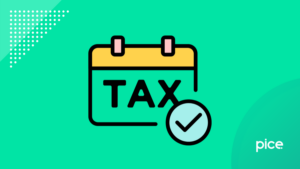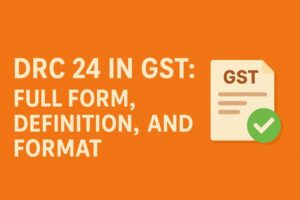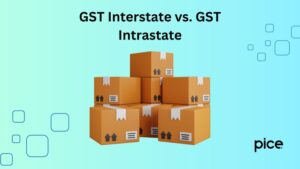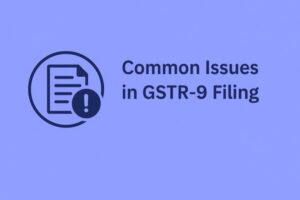What is GSTIN Number: Format, Apply & Verification
- 16 Oct 25
- 10 mins
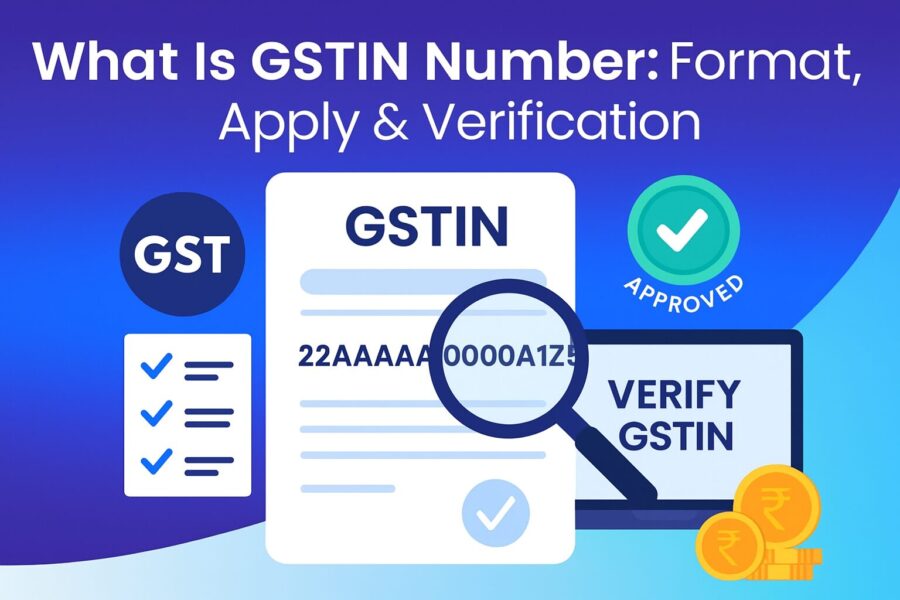
What is GSTIN Number: Format, Apply & Verification
Key Takeaways
- GSTIN (Goods and Services Tax Identification Number) is a unique 15-digit code assigned to every GST-registered business in India.
- The GSTIN format includes state code, PAN, registration number, default character ‘Z’, and a check code for error detection.
- You can apply for GSTIN free of cost online via the GST portal or offline through GST Seva Kendras across India.
- Verifying GSTIN on the GST portal helps detect fake registrations and ensures compliance with GST laws.
- Having a valid GSTIN enables businesses to claim input tax credit, file returns, generate e-way bills, and build market credibility.
Before the Goods and Services Tax (GST) law was introduced, each state’s taxation body assigned a unique Tax Identification Number (TIN) to each registered business according to the state VAT law.
Likewise, service providers used to get a separate service tax registration number from the Central Board of Indirect Taxes and Customs (CBIC).
Following this, as soon as the businesses started registering under GST, the entities were assigned a 15-digit Goods and Services Tax Identification Number (GSTIN). In this article, we will learn about ‘what is GSTIN number’ and also discuss the application procedure to get registered under GST free of cost.
What is GSTIN?
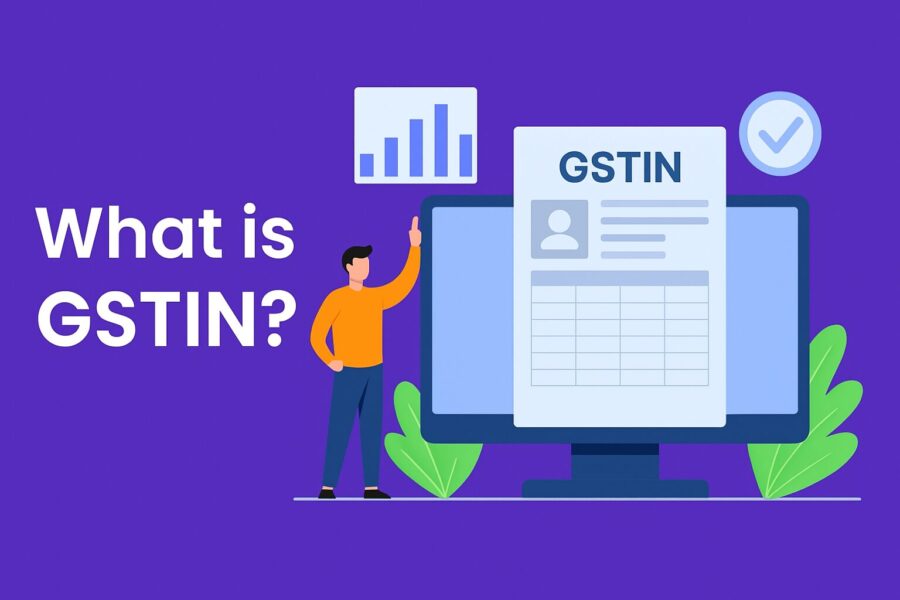
Every taxable person under GST law is given a state and PAN combined 15-digit GSTIN (Goods and Services Tax Identification Number).
Below, you can refer to the breakdown of a GSTIN format:
- The first 2 digits of one's 15-digit GST identification number state their state code.
- Following this, the next consecutive 10 digits represent the PAN (Permanent Account Number) of the concerned person or business entity.
- Next, the thirteenth digit is decided depending on the total number of registrations completed by the specific business within a state using the same PAN number.
- Then, the fourteenth digit is supposed to be the alphabet ‘Z’ in all cases.
- Finally, the last digit is a check code assigned to determine errors and is identified by means of an alphabet.
GST Number Example
To understand what is GSTIN number, let us consider an example. Suppose there is a Delhi-based company with ABCDE1234F as their PAN number.
Their GSTIN can look like this: 07ABCDE1234F2Z5, where
- 07 represents the state code for Delhi
- ABCDE1234F is the PAN number
Now let us assume that the company has only one registration approved in a state. In that case, their GSTIN’s 13th digit will be ‘1’. However, if a second registration follows for the same state, the 13th digit will change to ‘2’.
Upon exceeding 10 registrations, in case a business has 11 registrations in the same state, then the GST authorities assign the 13th digit as ‘B’. Similarly, each business entity can utilise this method to complete registrations up to 35 business verticals.
The 14th character ‘Z’ is kept as a default, and the 15th digit ‘5’ is a check code used for internal verification.
How to Apply for GSTIN?
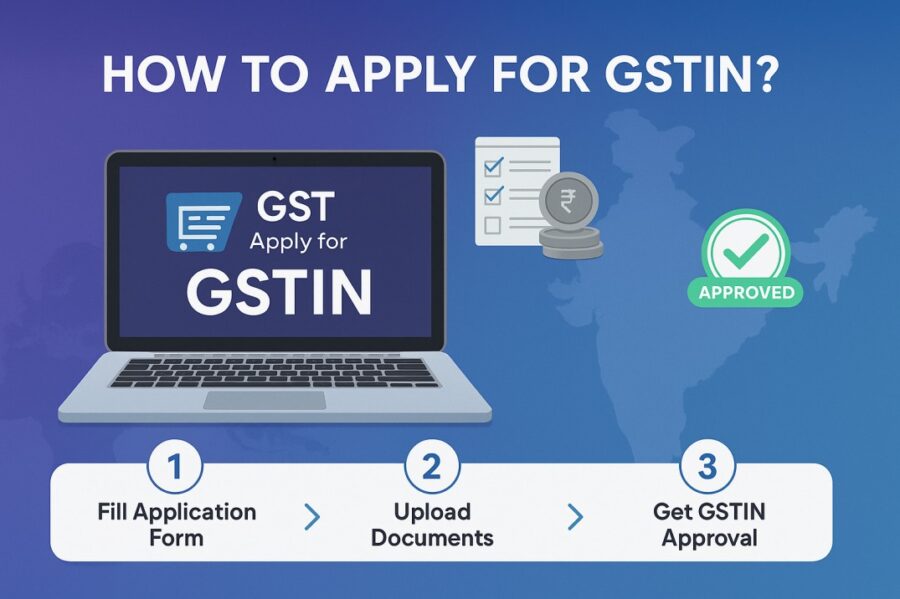
Applying for a new GSTIN is considered a part of the GST enrolment process. After your GST application is authenticated by a proper officer, you get a unique GSTIN to proceed with your business operations. As you will learn about how to get GSTIN, first understand that there are two primary ways to apply:
1. Through GST Portal
Go through the steps below to understand the GST registration procedure that can be completed online:
Step 1: Complete the login process by visiting the official online GST portal.
Step 2: Navigate to the option tagged as ‘New Registration’ and type in some important details, such as your name, email address, contact details, etc. in Part A.
Step 3: Next, the GST portal will check your details by forwarding an OTP to your Aadhaar-registered mobile number and email address.
Step 4: After the initial 3 steps, you will get an Application Reference Number (ARN) through your phone number or email ID.
Step 5: As soon as you get the ARN, you can continue filling out Part B of the GSTIN application form. In this stage, you will be asked to produce the required documents.
Step 6: Once done, you have to submit your GSTIN application form by using Aadhaar OTP or DSC.
After Part B has been uploaded, the GST officer will process your request in no more than 3 working days. After verification, the officer will approve the request and issue the Certificate of Registration, also known as Form GST REG-06. Otherwise, you may get form GST REG-03 in case the officer needs more related information to approve your application.
Applicants normally get 7 working days to provide the additional details. After you have submitted the necessary papers, a proper officer holds the authority to turn down your application if he gets reasons for the same. To do this, they can issue Form GST-REG-05 addressing the GST applicant.
On the other hand, if all the information provided by you is genuine, then your application will be approved in due time. Consequently, you will get a Certificate of Registration.
2. Through GST Seva Kendra
The alternative method to complete registration under GST is by reaching a GST Seva Kendra. These service centres are located in key areas across the country and handle all GST-related processes. They act as a support system for taxpayers, making the registration process easier and more accessible.
The Indian government has established multiple GST Seva Kendras to help with GST migration, especially for individuals who may not be familiar with the online registration process.
Documents Required to Obtain GSTIN
Before you apply for a GSTIN, ensure that you have the below-mentioned documents:
- Recent photographs of stakeholders and authorised signatory
- Proof of Constitution of Business (Partnership Deed, Trust Deed, Certificate of Incorporation, Certificate for Establishment, Registration Certificate)
- Proof of Appointment of Authorised Signatory (Letter of Authorisation/Copy of Resolution passed by BoD/Managing Committee and Acceptance Letter)
- Proof of Principal & Additional Place of Business (Property Tax Receipt, Municipal Khata copy, Electricity Bill, Rent/Lease Agreement or any other document/certificate issued by the government
How to Verify GSTIN?
Many firms generate fake or invalid GSTIN numbers to overcharge customers and evade taxes. To start with, each trader or service provider levying GST must print their respective GSTINs across all invoices to comply with the established regulations. However, you can verify the authenticity of the GSTIN assigned to you in case you have specific doubts.
Verifying the validity of a GSTIN number is not that difficult. You have to follow the steps given below:
Step 1: Visit the GST portal.
Step 2: On the menu bar, locate the option saying ‘Search Taxpayer’.
Step 3: Provide the GSTIN that you want to enquire in the search area in addition to CAPTCHA given to you.
Step 4: If you are enquiring about a business that is legally registered under the GST law, then you can see the following information:
- GSTIN Status
- Registration Date
- Type of taxpayer, i.e., whether a regular, composition or SEZ unit
- Business category or structure, i.e., whether a company or sole proprietorship
- On the other hand, if you have entered an invalid GSTIN, then the system will return a notification saying ‘Error’.
Benefits of Getting a GSTIN
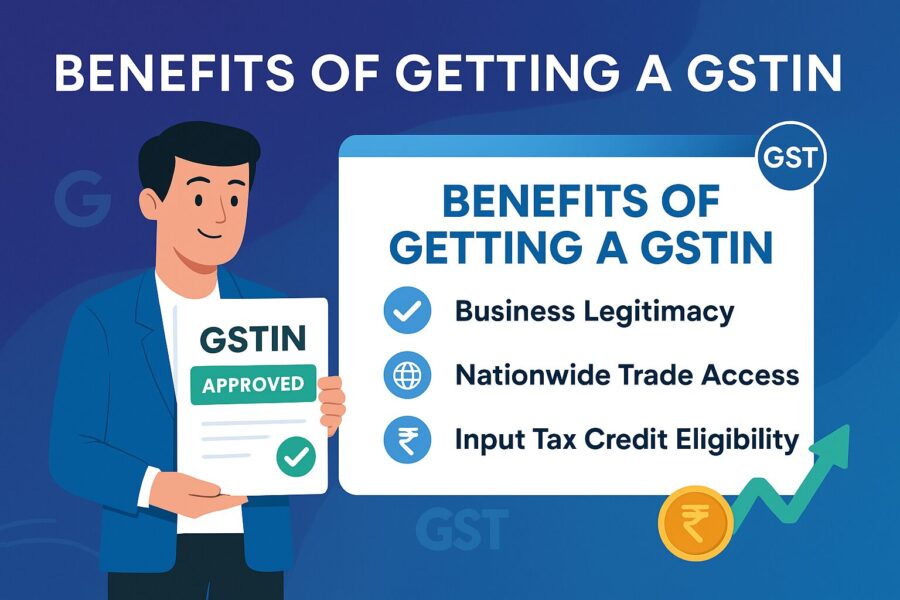
The advantages of having a GSTIN are as follows:
- The concerned business will now be legally recognised as a taxable supplier with an active GSTIN.
- A GST registration enables your company to exhibit more potential compared to a small firm as you can avail input credit for relevant purchases.
- You can easily scale and extend your company’s reach by signing up on different e-commerce websites or making your own website.
- Finally, you can get rid of limitations imposed on interstate sales if you use a valid GSTIN.
- Having a GSTIN builds trust among suppliers, customers and financial institutions, as it shows the business follows tax regulations. A GSTIN lookup further confirms its legitimacy.
- It allows businesses to easily file GST returns, generate e-way bills and manage input tax credit claims through the GST portal.
What is the Cost of Obtaining GSTIN?
If you are planning to register your business under GST, you can get a GSTIN completely free of cost. The Indian government does not charge any fees for GST registration and you can apply for it online through the official GST portal without paying anything.
However, if you choose to get help from a consultant or professional for the registration process, they may charge a service fee for their assistance.
What is the Difference Between GSTIN and GSTN?
Today, having a GSTIN (Goods and Services Tax Identification Number) is essential for any registered business. It is a unique identifier that has replaced earlier state-specific VAT numbers and is used for all tax-related purposes.
Managing all this is the GSTN (Goods and Services Tax Network), where businesses register, file returns and maintain tax records. It is considered the IT backbone of the official GST portal, which the Government of India uses to track all financial transactions under GST.
Conclusion
Getting a grip on what is GSTIN number is essential for all business owners, from small traders to established corporations. Having a valid GSTIN not only ensures that you are complying with tax laws but also lets you claim input tax credits and boosts your credibility across the industry.
💡If you want to streamline your payment and make GST payments via credit, debit card or UPI, consider using the PICE App. Explore the PICE App today and take your business to new heights.
FAQs
What is a GSTIN number in India?
How is the GSTIN number structured?
First 2 digits: State code
Next 10 digits: PAN of the business
13th digit: Number of registrations in the state under the same PAN
14th digit: Always “Z” by default
15th digit: Check code for error detection
This structured format ensures unique identification and error-free compliance.
How can I apply for a GSTIN number?
How do I verify a GSTIN number?
What are the benefits of having a GSTIN?
Legal recognition as a registered business
Ability to claim Input Tax Credit (ITC)
Eligibility to sell on e-commerce platforms and expand interstate trade
Easier GST return filing and e-way bill generation
Builds credibility with customers, suppliers, and financial institutions
It simplifies compliance while enhancing business growth opportunities.
 By
By 







